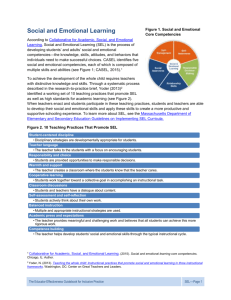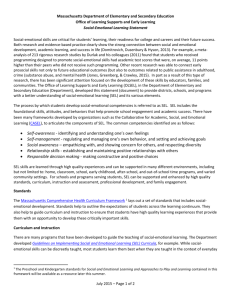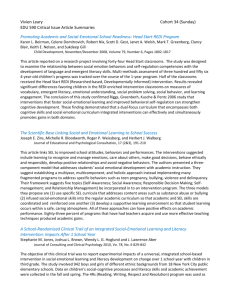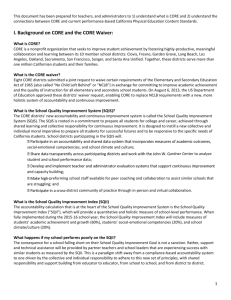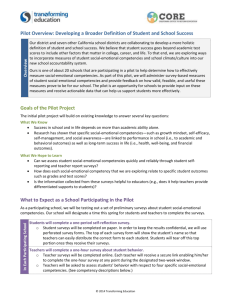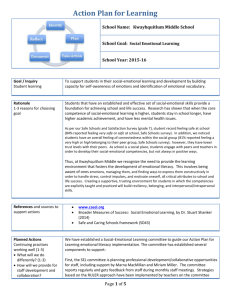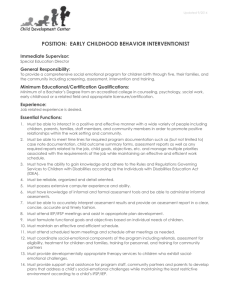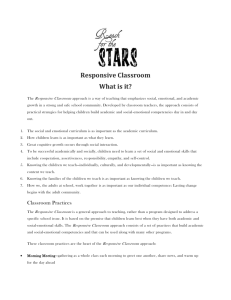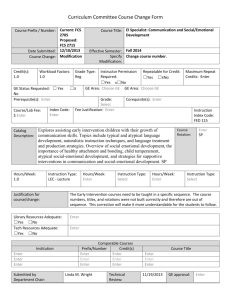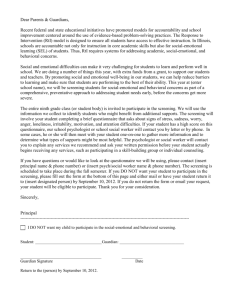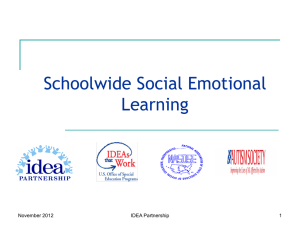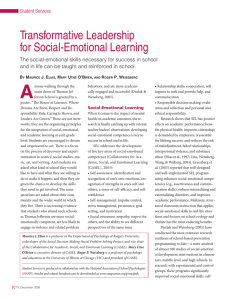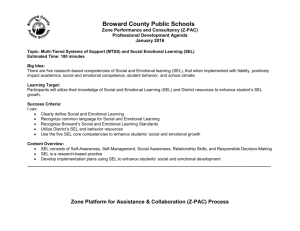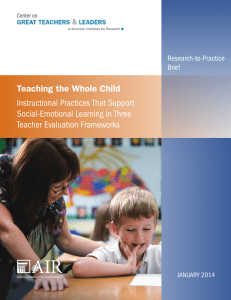Social Emotional Learning and Teaching Practices
advertisement
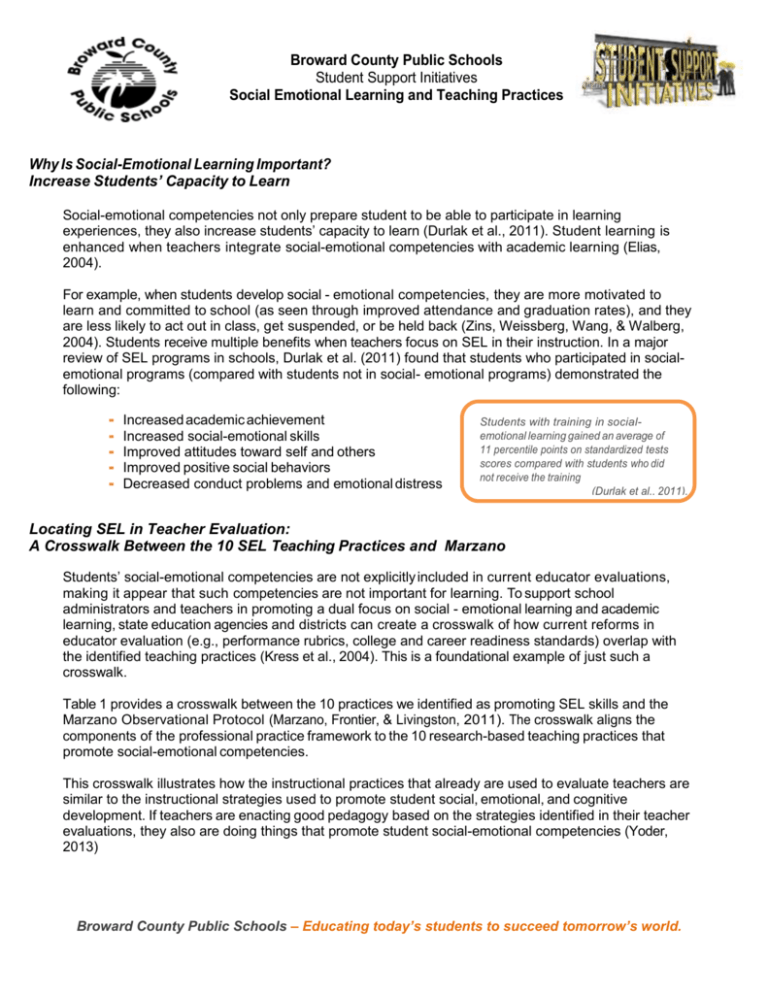
Broward County Public Schools Student Support Initiatives Social Emotional Learning and Teaching Practices Why Is Social-Emotional Learning Important? Increase Students’ Capacity to Learn Social-emotional competencies not only prepare student to be able to participate in learning experiences, they also increase students’ capacity to learn (Durlak et al., 2011). Student learning is enhanced when teachers integrate social-emotional competencies with academic learning (Elias, 2004). For example, when students develop social - emotional competencies, they are more motivated to learn and committed to school (as seen through improved attendance and graduation rates), and they are less likely to act out in class, get suspended, or be held back (Zins, Weissberg, Wang, & Walberg, 2004). Students receive multiple benefits when teachers focus on SEL in their instruction. In a major review of SEL programs in schools, Durlak et al. (2011) found that students who participated in socialemotional programs (compared with students not in social- emotional programs) demonstrated the following: ▪ ▪ ▪ ▪ ▪ Increased academic achievement Increased social-emotional skills Improved attitudes toward self and others Improved positive social behaviors Decreased conduct problems and emotional distress Students with training in socialemotional learning gained an average of 11 percentile points on standardized tests scores compared with students who did not receive the training (Durlak et al., 2011). Locating SEL in Teacher Evaluation: A Crosswalk Between the 10 SEL Teaching Practices and Marzano Students’ social-emotional competencies are not explicitly included in current educator evaluations, making it appear that such competencies are not important for learning. To support school administrators and teachers in promoting a dual focus on social - emotional learning and academic learning, state education agencies and districts can create a crosswalk of how current reforms in educator evaluation (e.g., performance rubrics, college and career readiness standards) overlap with the identified teaching practices (Kress et al., 2004). This is a foundational example of just such a crosswalk. Table 1 provides a crosswalk between the 10 practices we identified as promoting SEL skills and the Marzano Observational Protocol (Marzano, Frontier, & Livingston, 2011). The crosswalk aligns the components of the professional practice framework to the 10 research-based teaching practices that promote social-emotional competencies. This crosswalk illustrates how the instructional practices that already are used to evaluate teachers are similar to the instructional strategies used to promote student social, emotional, and cognitive development. If teachers are enacting good pedagogy based on the strategies identified in their teacher evaluations, they also are doing things that promote student social-emotional competencies (Yoder, 2013) Broward County Public Schools – Educating today’s students to succeed tomorrow’s world. Table 1 Crosswalk Between 10 Teaching Practices and Marzano Professional Teaching Framework Teaching Practices Marzano Protocol 1. Student-Centered Discipline Demonstrating “withitness” Applying consequences Acknowledging adherence to rules and procedures Displaying objectivity and control 2. Teacher Language Celebrating student success 3. Responsibility and Choice Establishing classroom routines Providing students opportunities to talk about themselves 4. Warmth and Support (Teacher and Peer) Understanding students’ interests and backgrounds Using behaviors that indicate affection for students 5. Cooperative Learning Organizing students to practice and deepen knowledge 6. Classroom Discussions Group processing of new information 7. Self- Reflection and SelfAssessment Reflecting on learning 8. Balanced Instruction Identifying critical information Organizing students to interact with new knowledge Reviewing new content Chunking content into “digestible bites” Elaborating new information Recording and representing new knowledge Reviewing content Examining similarities and differences Providing resources and guidance Using academic games Maintaining a lively pace Using friendly controversy 9. Academic Press and Expectations Demonstrating value and respect for low-expectancy students Asking questions of low-expectancy students Probing incorrect answers with low-expectancy students 10. Competence Building— Providing clear learning goals Modeling, Practicing, Feedback, Tracking student progress Coaching Examining errors in reasoning Practicing skills, strategies, and processes Revising knowledge Demonstrating intensity and enthusiasm Adapted from Teaching the Whole Child Instructional Practices That Support SEL in Three Teacher Evaluation Frameworks
